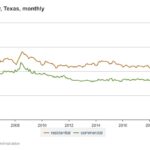It’s a common assumption: coffee packs a much bigger caffeine punch than tea. While that can often feel true after your morning brew, the reality is more nuanced. Many believe coffee is always the stronger stimulant, but that’s not entirely accurate. Let’s delve into the facts and compare the caffeine content of tea versus coffee, exploring where the real energy boost lies.
To understand the caffeine comparison, it’s crucial to start at the source. Surprisingly, before they even reach your cup, tea leaves actually contain more caffeine than coffee beans on average. Caffeine acts as a natural pesticide, a defense mechanism found in both tea and coffee plants, as well as in cocoa and yerba mate. The Camellia sinensis plant, the origin of all true teas (black, green, white, oolong), boasts a higher caffeine concentration in its leaves than Coffea arabica or Coffea robusta coffee beans.
Alt text: Raw tea leaves piled, showcasing the higher caffeine content in leaves compared to coffee beans before brewing.
However, the story shifts when we talk about your final beverage. Brewed coffee typically delivers more caffeine per serving than steeped tea. This difference arises from the brewing process itself. Coffee is generally a more concentrated drink than tea. If you’ve ever observed a cup of each side-by-side, you’ll notice tea, even black tea, is often more translucent than coffee. Coffee, in contrast, can appear almost opaque, indicating a higher concentration of extracted compounds.
Alt text: Dark, rich brewed coffee in a ceramic cup, illustrating the higher concentration and caffeine delivery compared to tea after brewing.
Coffee’s strength comes from a more intense extraction process. While both tea and coffee brewing methods vary, coffee is generally:
- Brewed at a higher temperature than many teas, especially delicate green and white teas.
- Brewed for a longer duration than most teas are steeped, particularly green teas.
- Often made with a higher coffee-to-water ratio than tea-to-water.
Even robust black teas, steeped at high temperatures for several minutes, often don’t release as much caffeine as coffee due to the chemical structure of coffee and the typical brewing methods employed.
It’s important to note that caffeine levels fluctuate significantly in both coffee and tea. As a general guideline, coffee often contains about twice the caffeine of tea. However, this is a broad generalization, and actual amounts can vary widely. Typically, you can expect:
- Coffee: 95 to 200 milligrams of caffeine per 8-ounce cup.
- Black Tea: 14 to 70 milligrams of caffeine per 8-ounce cup.
- Green Tea: 24 to 45 milligrams of caffeine per 8-ounce cup.
- White Tea: 6 to 60 milligrams of caffeine per 8-ounce cup.
(For context, caffeinated sodas usually contain 20 to 50 milligrams of caffeine per 12-ounce can.)
In coffee, the caffeine variance is largely due to the bean variety. Robusta beans naturally contain approximately twice the caffeine of Arabica beans. Brewing methods and roast level also play a role.
For tea, variations stem from harvesting and processing. Black, green, and white teas all originate from the same plant but are harvested at different times. The timing of harvest significantly impacts caffeine levels, with younger leaves often having higher concentrations. Furthermore, the oxidation process for black tea enhances caffeine extraction during steeping, contributing to its often higher caffeine content compared to less oxidized teas like green and white.
Alt text: Assortment of black, green, and white tea leaves, highlighting the processing and harvest differences that influence caffeine levels in tea.
Ultimately, both coffee and tea can be part of a healthy lifestyle when consumed in moderation. The Mayo Clinic advises limiting daily caffeine intake to under 500 milligrams, which allows for several cups of either beverage. Both offer health benefits and, unlike many sodas and sugary drinks, are naturally sugar-free. Choosing between tea and coffee often comes down to personal preference in taste and desired caffeine effect, rather than a simple question of which has ‘more’ caffeine. Understanding the nuances of caffeine content in each allows you to make informed choices to suit your needs and enjoy your beverage of choice.
